
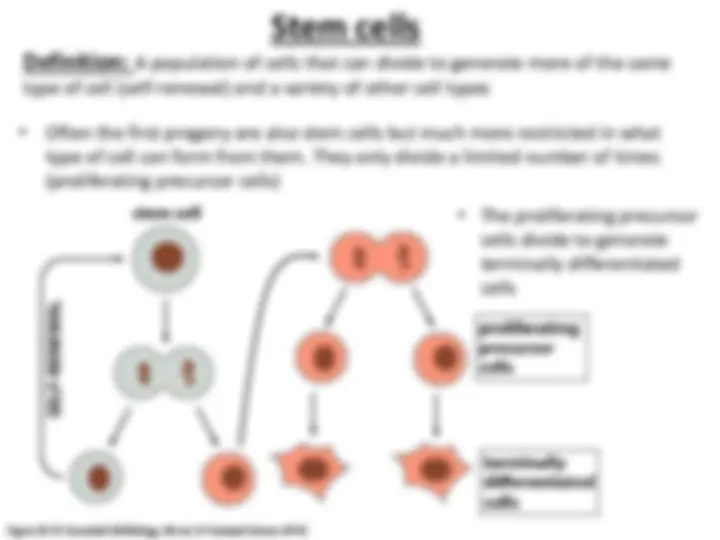
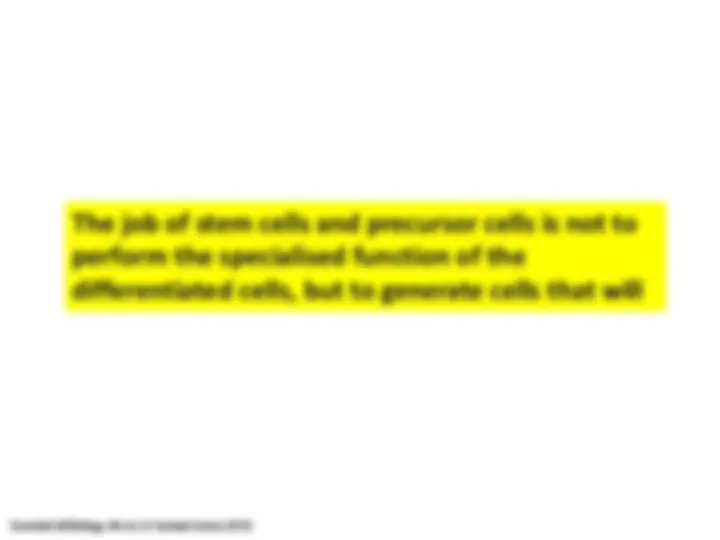
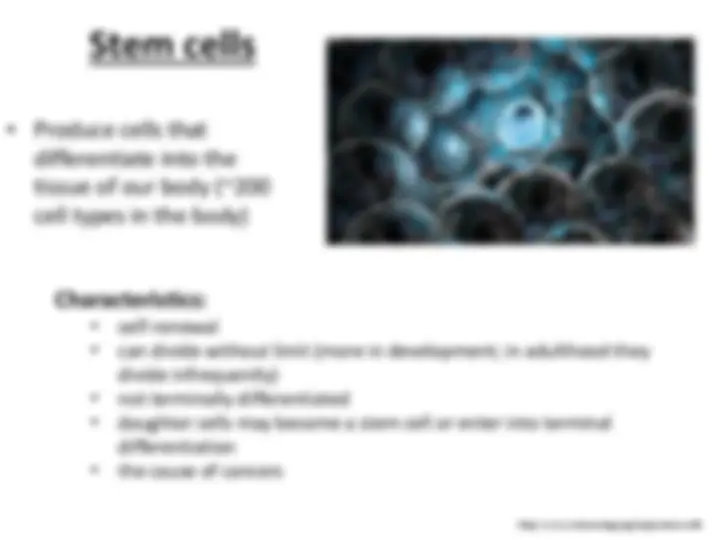
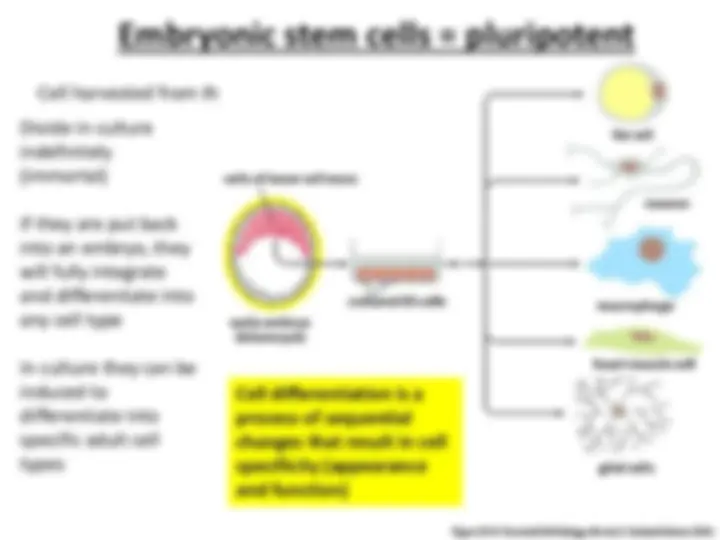
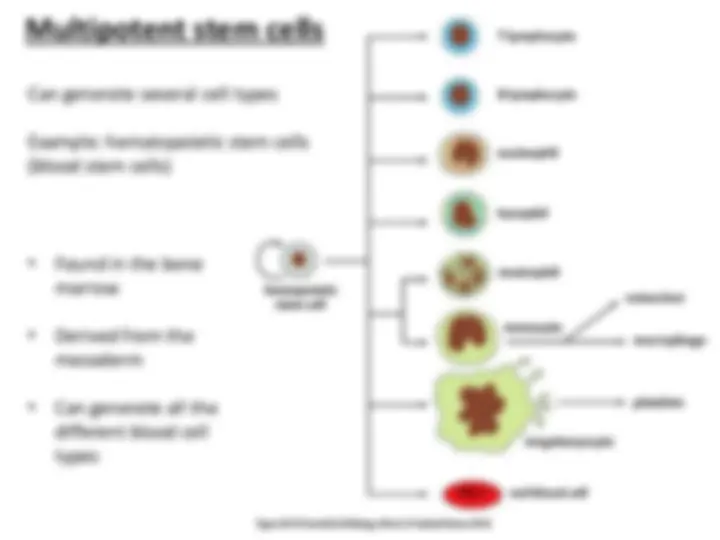
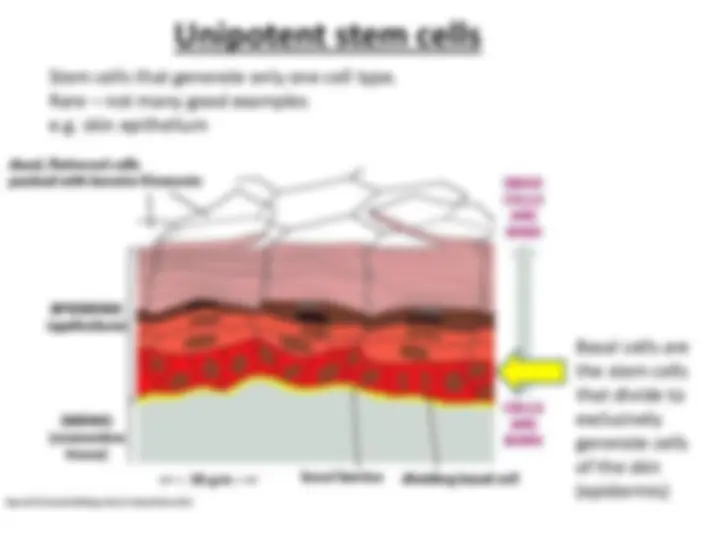
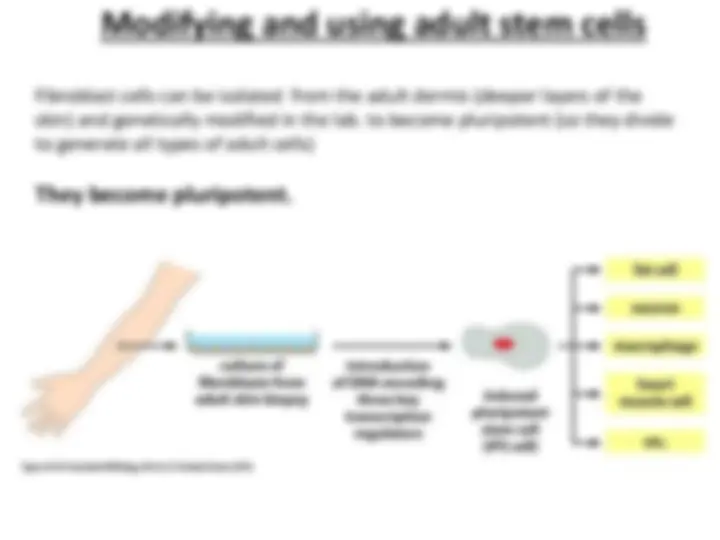
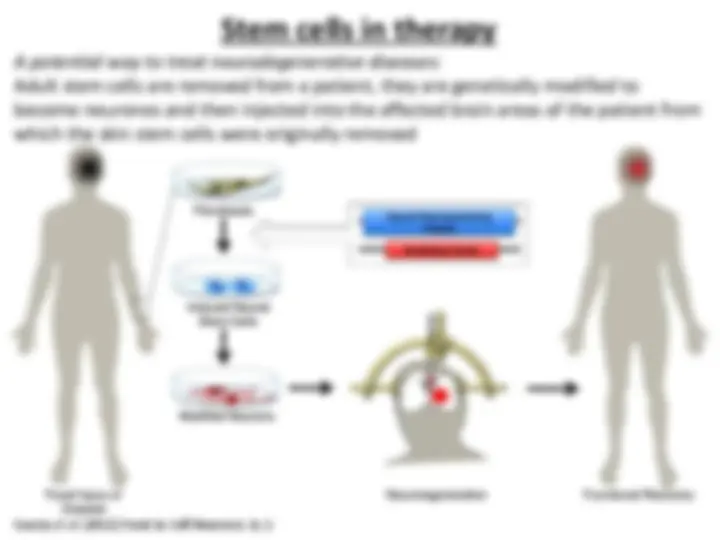
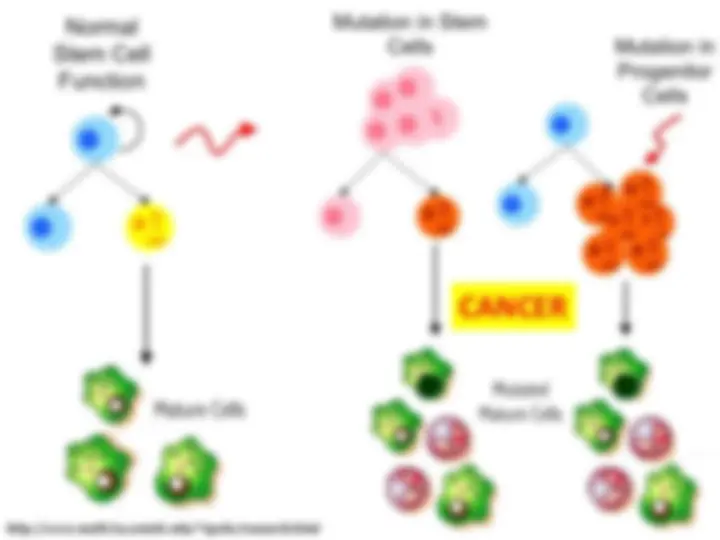
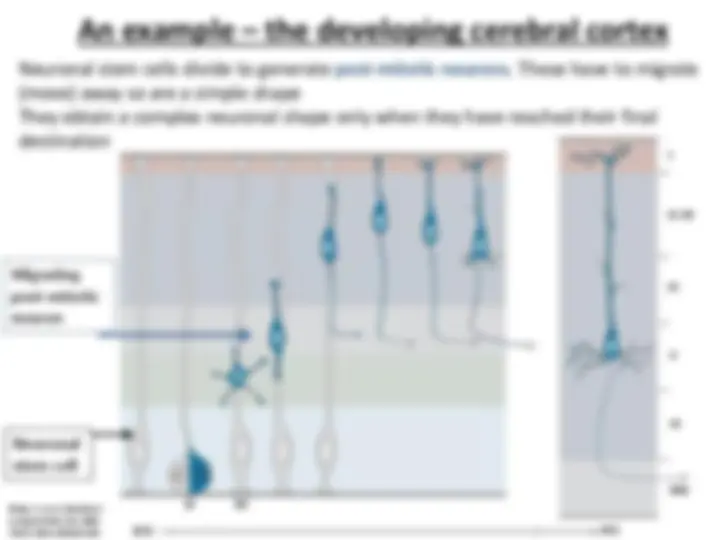
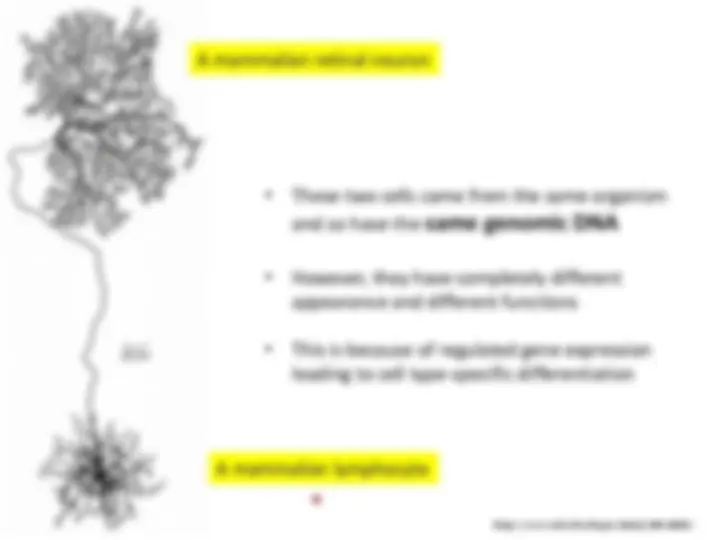
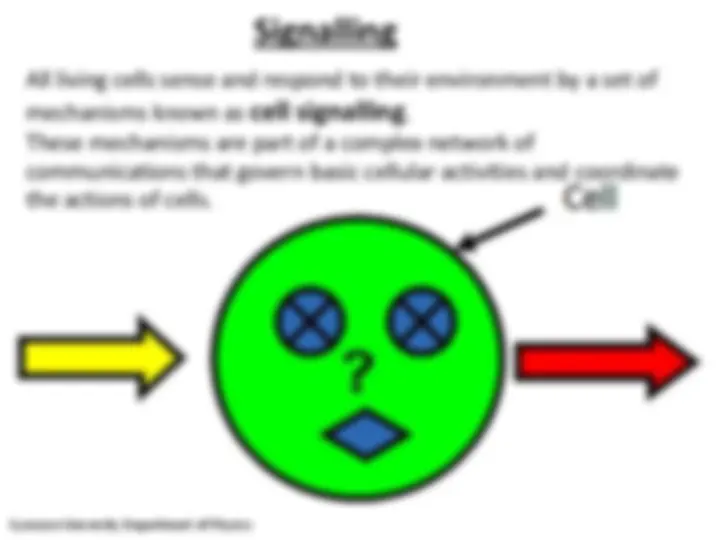
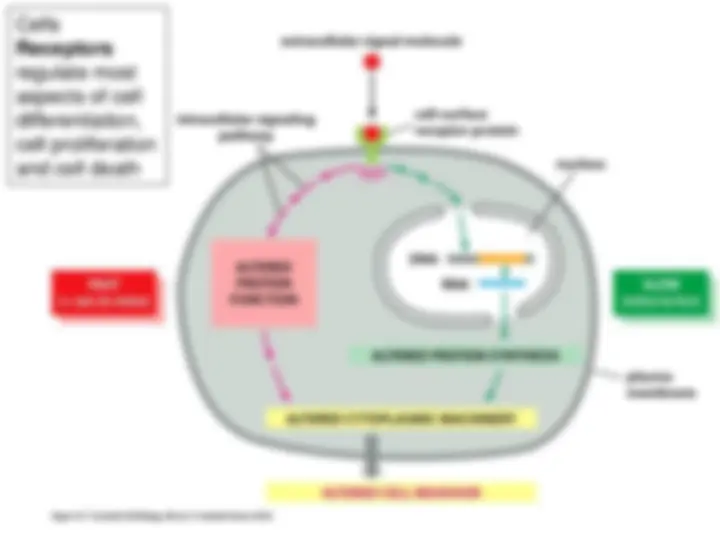
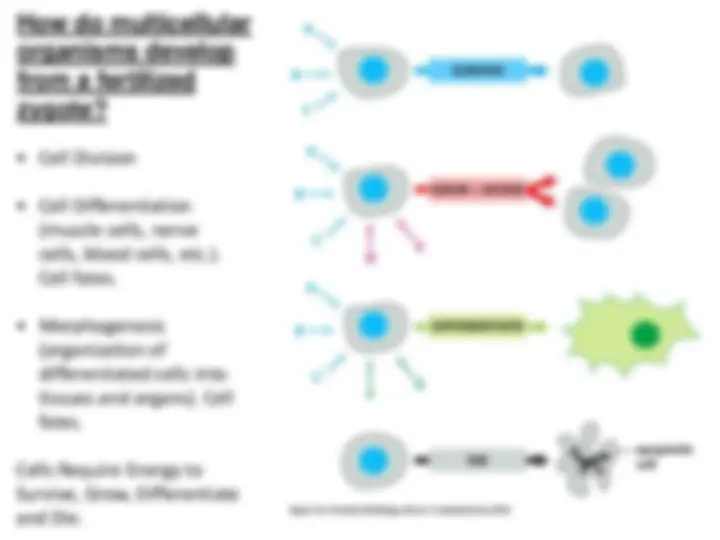




Study with the several resources on Docsity

Earn points by helping other students or get them with a premium plan


Prepare for your exams
Study with the several resources on Docsity

Earn points to download
Earn points by helping other students or get them with a premium plan
Community
Ask the community for help and clear up your study doubts
Discover the best universities in your country according to Docsity users
Free resources
Download our free guides on studying techniques, anxiety management strategies, and thesis advice from Docsity tutors
Cell and Microbiology lecture notes
Typology: Lecture notes
1 / 24

This page cannot be seen from the preview
Don't miss anything!

















Aims
The job of stem cells and precursor cells is not to
perform the specialised function of the
differentiated cells, but to generate cells that will
Stem cells
http://www.sciencemag.org/topic/stem-cells
generate all three primary germ cell layers of the developing embryo – ectoderm, mesoderm and endoderm and form a whole organism. The fertilised egg is a totipotent stem cell, up to the 4 cell stage
After the 4 cell stage stem cells can generate all cell types, but cannot organise them into a body
https://www.ncbi.nlm.nih.gov/pmc/articles/PMC3991987/
Not totipotent
Embryonic stem cells = pluripotent
Divide in culture indefinitely (immortal)
If they are put back into an embryo, they will fully integrate and differentiate into any cell type
In culture they can be induced to differentiate into specific adult cell types
Cell harvested from the early embryo
Cell differentiation is a process of sequential changes that result in cell specificity (appearance and function)
Unipotent stem cells
Stem cells that generate only one cell type. Rare – not many good examples e.g. skin epithelium
Basal cells are the stem cells that divide to exclusively generate cells of the skin (epidermis)
Normal adult stem cells, e.g. skin
dermis
basal layer
dead cells
Terminal differentiation
stem cells
Modifying and using adult stem cells
Fibroblast cells can be isolated from the adult dermis (deeper layers of the skin) and genetically modified in the lab. to become pluripotent (so they divide to generate all types of adult cells)
Garcia et al (2012) Front in Cell Neurosci. 6; 1-
Stem cells in therapy
A potential way to treat neurodegenerative diseases: Adult stem cells are removed from a patient, they are genetically modified to become neurones and then injected into the affected brain areas of the patient from which the skin stem cells were originally removed
Cell fate determination – how does it happen? One possible mechanism is dictated by how the stem cell divides Cell fate determinant protein is distributed throughout the stem, cell
Cell fate determinant protein is distributed on one side of the stem, cell
SYMMETRICAL ASYMMETRICAL http://www.md pi.com/2073- 8994/7/4/
e.g. two stem cells
e.g. one stem cell and one differentiated cell
Cell fate determination –
how does it happen?
A second possible mechanism is directed by the external environment (signalling)
If one of the daughter cells is exposed to a different environment which signals to it, it may differentiate into (become) a terminally differentiated cell
http://www.nature.com/articles/nri
A mammalian retinal neuron
A mammalian lymphocyte
https://www.ncbi.nlm.nih.gov/books/NBK26885/
Syracuse University Department of Physics
mechanisms known as cell signalling.
Signalling